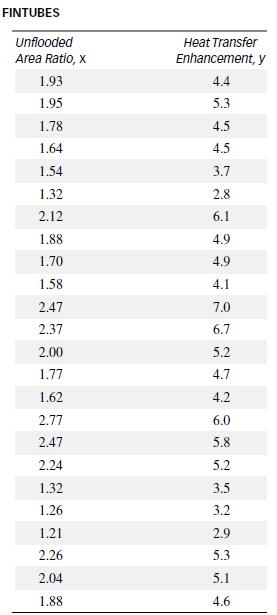A study was conducted to model the thermal performance of integral-fin tubes used in the refrigeration and
Question:
A study was conducted to model the thermal performance of integral-fin tubes used in the refrigeration and process industries (Journal of Heat Transfer, Aug. 1990). Twenty-four specially manufactured integral-fin tubes having rectangular shaped fins made of copper were used in the experiment. Vapor was released downward into each tube and the vapor-side heat transfer coefficient (based on the outside surface area of the tube) was measured. The dependent variable for the study is the heat transfer enhancement ratio y, defined as the ratio of the vapor-side coefficient of the fin tube to the vapor-side coefficient of a smooth tube evaluated at the same temperature. Theoretically, heat transfer will be related to the area at the top of the tube that is “unflooded” by condensation of the vapor. The data in the table are the unflooded area ratio (x) and heat transfer enhancement (y) values recorded for the 24 integral-fin tubes.
a. Find the least-squares line relating heat transfer enhancement y to unflooded area ratio x.
b. Plot the data points and graph the least-squares line as a check on your calculations.
c. Interpret the values of β̂o and β̂1.

Step by Step Answer:

Statistics For Engineering And The Sciences
ISBN: 9781498728850
6th Edition
Authors: William M. Mendenhall, Terry L. Sincich




